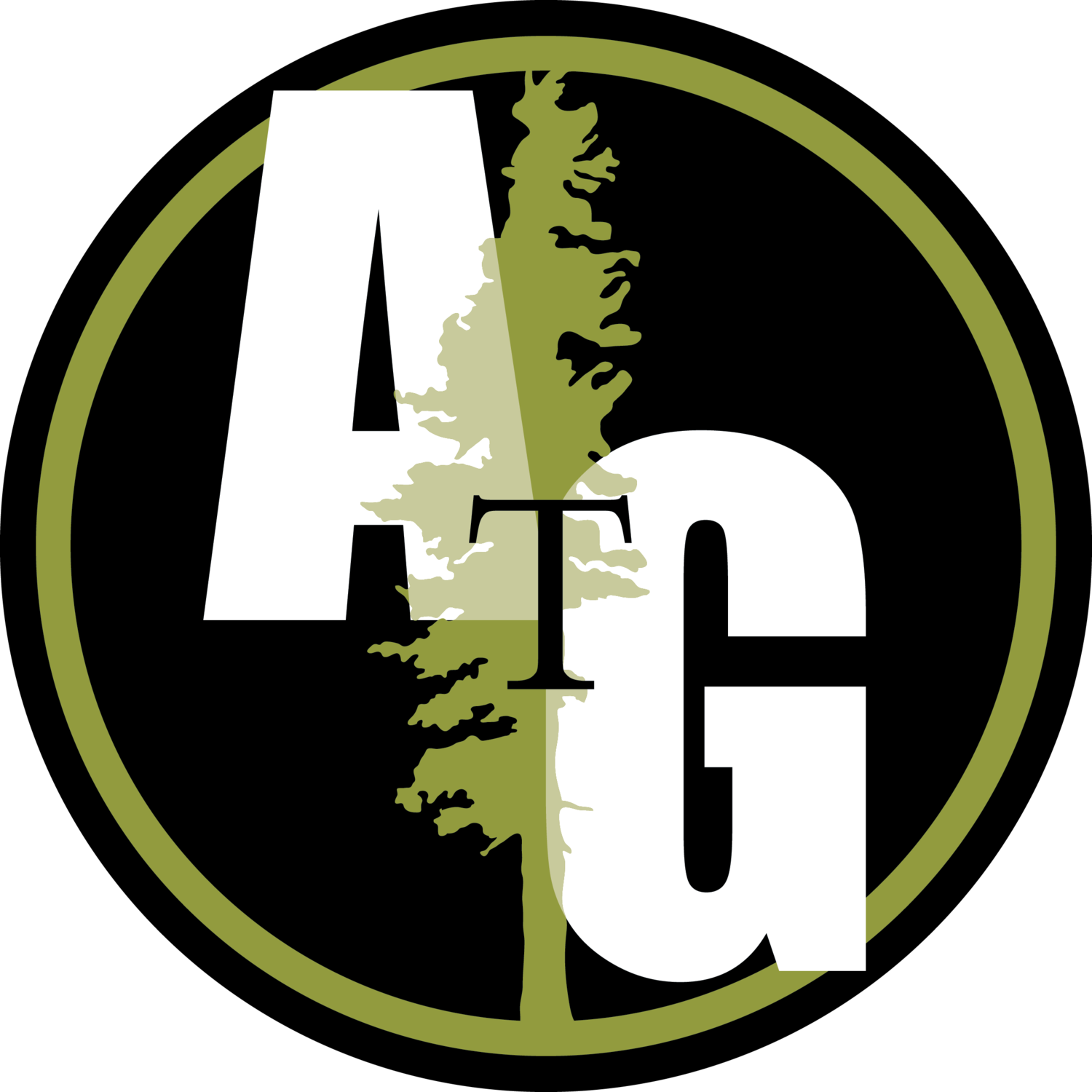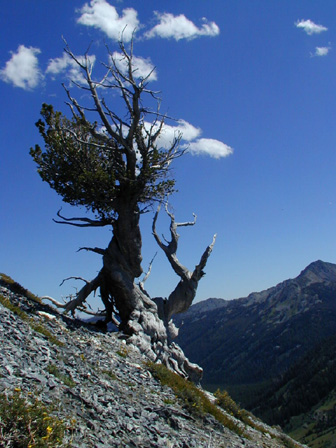Brian french
Welcome to our new website. 2018 will prove to be an eventful year for us as years past. Keep checking in as we update this new site with our works in the trees.
Will Koomjian
Hey all! On February 11th, 2010 Oregon Field Guide will air what will no doubt be a fascinating segment onour new state champion Limber Pine. The tree was discovered growing on a steep, rocky slope of Cusick Mt in the Eagle Cap Wilderness. What is really exciting though, is that this tree could be the oldest living tree in the Pacific Northwest. While the jury is still out on the age of the champion, another tree from the grove has already been confirmed at over 2000 years old, outliving the record of 1834 years for Alaska Yellow Cedar.
The story will air at 8:30pm on Feb. 11th on OPB, and will be rebroadcast on Feb. 14th at 6:30pm. You will also be able to stream segments of the show, including the one about the old Limber Pine, at the Oregon Field Guide website, or read about it and look at a great slideshow on our website.
Will Koomjian
Jan 9, 2010
The Rest of The Story
Category:Trekking for Tropical Conifers General
Posted by: willkoomjian
The Rest of the Story
Well, it's been a bit since I updated the story of my Indonesian tree hunting adventure. OK, more than a bit. Many of you who have followed my trip I've had the pleasure of personally updating, but many other I have not. So, without further ado, here is The Rest of The Story.
After the hectic but ultimately successful month in Borneo (see Success! blog post), I returned to Yogyakarta to finish my language studies. While it was certainly nice to have some of the conveniences of Java (access to english language books and magazines chief among them), I missed the wildness of Borneo. A scant 3 weeks later, I was hopping on a plane for Manado, the capitol of the Minihasa region of North Sulawesi.
Manado is a strange place, being closer to the Philippines than to any other Indonesian cities. It still has all of the chaos and confusion of a typical Indonesian city, but because of its heritage as the capitol of a region and of a people, it has much more a sense of place than the costal cities of Borneo, which are full of Javanese immigrants and feel as though they could be anywhere. There was also less of the palpable tension between old and new that exists on Borneo. Modernization is bringing changes to daily life, the environment, and the ethnic makeup of the place, but all these changes are happening at a much slower pace than in Borneo. This is probably due to Sulawesi's relatively poorer stock of natural resources and further distance from the major population centers of Java.
After getting aquatinted with the place, I set off on a relatively fruitless search for Agathis trees in the Tankoko National Park of North Sulawesi. I saw a few, all small, and couldn't search the higher elevation areas, where I expected the larger trees to be due to restrictions on off-trail hiking for foreign nationals. (I was told, straight-faced, by the park supervisior that it was no problem; all I had to do was go to Jakarta and fill out some forms). I planned my next tree expedition for remote Eastern Sulawesi, in a place called Morowali Nature Reserve. Before I started the two day boat trip to the nearest town I couldn't resist getting in some scuba/snorkel time on Pulau Bunaken, famous as one of the best scuba diving spots in the world.
Eastern Sulawesi was an incredibly relaxing place to be. Being semi-fluent in bahasa Indonesia already, it felt liberating to again be someplace where no one was expecting to see a white foreigner. After making arraingments for a guide, we set off on the all-day boat trip to Morowali. A hilarious series of boat rides later, with each boat getting progressively smaller and less seaworthy, we were finally hiking through the most beautiful floodplain meadow I've ever seen to a native stilt house where we would spend the night.
The nature reserve, strangely, is set up as much to protect the native peoples who live there as the wildlife. The orang Wana who I stayed with use shifting agriculture to grow most of their food, but get their rice and other outside supplies by selling Dammar (the dried sap of Agathis trees) to middlemen who sell it in town. In many ways, their entire way of life is sustained by Dammar. My interest in Agathis trees made me an instant friend. Everyone, from the old men to the little children was happy to talk about Agathis trees and the location of good groves.
I spent a week and a half trekking around to different villages and going on Dammar collecting expeditions. The orang Wana harvest Dammar by hacking a slit in to the side of an Agathis tree, then returning in a month or so to collect the dried sap which has collected under the wound. This method doesn't kill the tree, and they only harvest from healthy mature trees. They explained to me that harvesting from trees that are too young can stunt them, preventing them from becoming productive, and harvesting from older trees sometimes kills them while bringing relatively little sap in return.
So while the natives went on their runs, I followed along and measured the older, larger trees. I would say the orang Wana were the nicest, most hospitable people I met in my entire time in Indonesia, but it seems that I could (and have) said that exact same thing about any number of different villages or groups. One thing which did strike me as unique was the more open, laid back attitude of the people. Compared to other Indonesian cultures I had been exposed to (especially the Javanese), the orang Wana I knew were very informal and frank. It was a quite conspicuous difference from the masculine camraderie of the Dayaks I stayed with and the structured good manners of Javanese. This difference struck home with me when I asked one of the guides, a middle-aged man I had just met two days prior, about his dour expression, and he proceeded to tell me about his various difficulties and disagreements with his wife. His honesty and obvious agony over the situation I found rather touching, and I ended up letting him off a couple days early with full pay so he could go home and work things out with his wife.
After a hectic time trying to get to a major city to catch a flight out of Sulawesi, I stopped in Jakarta to wrap up loose ends, sort and pack all my stuff and say goodbye to my friends there. Then it was off to Hong Kong. I had arranged to work for Asia Tree Preservation, a high quality tree preservation company run by 3 Americans which works all throughout Asia. The month and a half that I spent working with them was great fun and very interesting work. It provided a much needed buffer between the total 'stranger in a strange land' experience of Indonesia and returning to my life in Oregon. Only in retrospect did I realize how harsh this transition would have been without the slow easing back in to routine and domesticity that working in Hong Kong provided.
And that's the rest of the story. I'm now back in Portland, climbing trees again for Peacock Tree Preservation and trying like hell to keep my bahasa Indonesia skills fresh. After so long, it may be natural to ask 'why update now?' Well, I want to get the rest of the story down because it looks like the narrative is gonna have a sequel: myself and Brian French are in negotiations to go to Hong Kong for several months this summer to work for Asia Tree Preservation, and are planning to use the proximity to do more international tree documenting. India is a likely destination this time, but I definitely think that my this trip needs to include a return to the islands of Indonesia. In documenting trees of the Araucaria family, to call this first trip just scratching the surface would be generous. Some of my priorities I want to pursue for next time will be (time and money permitting) visits to the Agathis labillardieri groves of West Papua and Araucaria hunsteinii in Papua New Guinea.
As this next chapter begins to take shape, we'll keep the blog updated with the latest info on our plans and thoughts.
-Will





